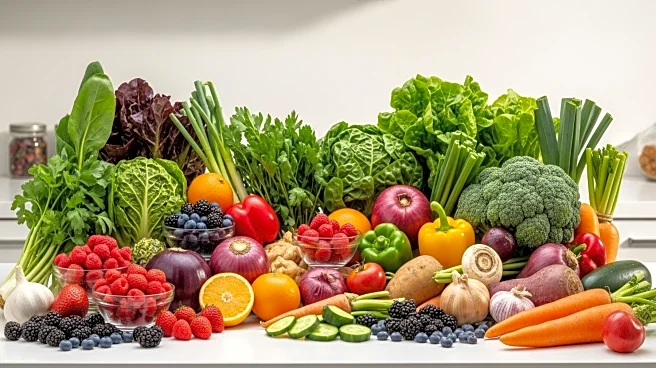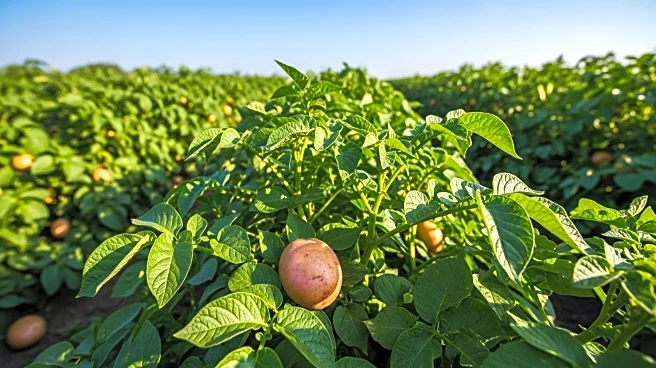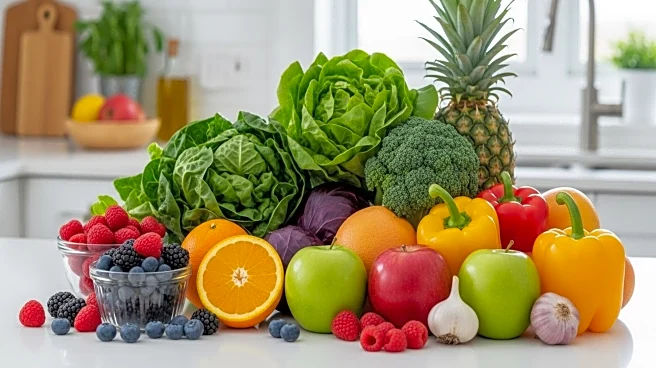What's Happening?
Whole Foods Market has released its annual trends report, highlighting beef tallow and added fiber as significant food trends for 2026. The report, developed by Whole Foods' trends council, which includes foragers, buyers, and culinary experts, reflects consumer preferences and insights from various food industry sources. Beef tallow is gaining popularity as a nostalgic and nourishing alternative to traditional cooking oils, with restaurants incorporating it into dishes like french fries and pastries. Additionally, fiber is becoming a focal point for consumers seeking gut health and digestive wellness, with increased product rollouts featuring fiber-rich ingredients such as cassava and chicory roots. The report also notes a modern renaissance of vinegar, valued for its flavor complexity and probiotic-like benefits, and highlights a shift towards natural sweeteners like cane sugar, fruit, honey, and maple syrup.
Why It's Important?
The identification of tallow and fiber as key trends underscores a broader shift in consumer preferences towards health-conscious and sustainable food choices. As consumers increasingly prioritize gut health and digestive wellness, the demand for fiber-rich products is expected to grow, impacting food manufacturers and retailers. The resurgence of beef tallow reflects a trend towards traditional and natural ingredients, which could influence restaurant menus and home cooking practices. The emphasis on natural sweeteners aligns with consumer desires to reduce sugar intake and avoid artificial additives, potentially driving innovation in product formulations. These trends may lead to increased market opportunities for brands that can effectively cater to these evolving consumer demands.
What's Next?
Whole Foods Market anticipates continued innovation in the food industry, with brands exploring new ways to incorporate these trends into their offerings. The rise of 'freezer fine dining' suggests a growing interest in convenient, high-quality frozen meals, which could reshape the frozen food aisle. The focus on women in agriculture, highlighted by the International Year of the Woman Farmer in 2026, may lead to increased visibility and support for female-led initiatives in the food sector. As these trends gain traction, stakeholders across the food industry, including producers, retailers, and consumers, will likely adapt to meet the changing landscape.
Beyond the Headlines
The trends identified by Whole Foods Market reflect deeper cultural shifts towards sustainability, health, and inclusivity in the food industry. The emphasis on natural ingredients and innovative formats suggests a move away from highly processed foods, aligning with broader societal concerns about health and environmental impact. The recognition of women in agriculture highlights ongoing efforts to promote gender equality and diversity within the industry, potentially influencing policy and business practices. These developments may contribute to long-term changes in consumer behavior and industry standards.












